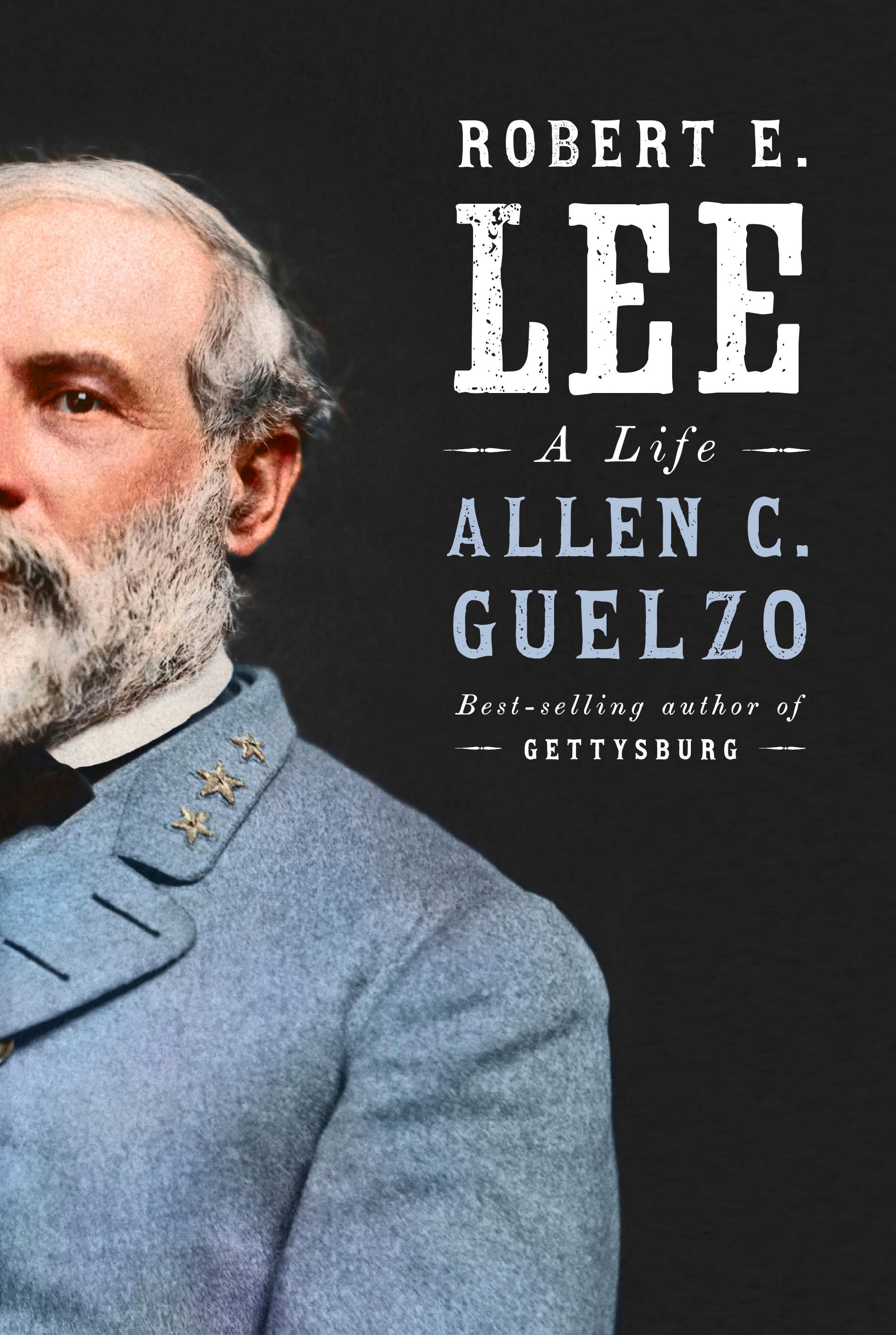Review: Idolatry surrenders to humanity in new Lee biography
Controversy over the equestrian memorial to Robert E

“Robert E. Lee: A Life” by Allen C. Guelzo (Knopf)
Controversy over the equestrian memorial to Robert E. Lee on stately Monument Avenue in Richmond Virginia was once limited to the removal of the blue-green oxidation from his bronze statue. In the wake of the banishment of the Confederate capital’s last major totem to the “Lost Cause,” Allen C. Guelzo’s timely biography expertly scrubs off 150 years of political and cultural patina accumulated since the renowned general’s passing to reveal a tragic humanity.
Guelzo establishes Lee’s antebellum character with a series of portraits beginning with his family’s prominence in Virginia and the mercurial career of his father, a hero of the Revolutionary War who later spent time in a debtors’ prison. The fame and the shame proved to be a dual burden for Robert Edward Lee (1807-1870) even after his appointment to the U.S. Military Academy and a series of infrastructure assignments with the U.S. Army Corps of Engineers.
Lee’s associates were struck early on by his seemingly faultless character, with looks to match. Despite his perfectionism — he never earned a demerit at West Point — the young Lee was very approachable. Guelzo quotes multiple contemporaries who noted Lee’s “dignity and agreeableness” and “a genial courtesy and joyous humor that rendered him a charming companion.” His Southern gentility and propriety would be described today simply as “cool.”
Lee was almost 40 before he first saw action, in the Mexican War, and distinguished himself as an engineer who could fight. In exchange for a steady Army paycheck and a stable family, he tolerated the snail’s pace of promotion and accepted never being the true master of his house, the Arlington estate of his wife, Mary Custis Lee (later turned into a military graveyard). But those tradeoffs shrank to insignificance in 1861 when Lee had to cast one of the biggest personal decisions in American history — commanding either the Union or Confederate forces in the gathering Civil War.
How did a man whose life was defined by service and duty defy his oath “to bear true allegiance to the United States of America… against all their enemies and opposers whatsoever… and obey the orders of the President of the United States”? Guelzo’s analysis indicates Lee had little interest in politics, especially secession, and even less regard for the “peculiar institution” of slavery. However, he deeply resented the dictates of Northern abolitionists and greatly feared they would unleash a “servile war” of vengeful slaves. The ultimate impetus to rebellion came from fealty to Virginia, less as a political entity than the home of his sons’ inherited properties.
Guelzo’s portrait of Lee in his 50s shows his ascension from worrywart to warrior to legend. Following the example of Lee’s early command method, his book surveys the battlegrounds as if through the general’s field glasses, sets the order of combat, then leaves the bloody details to the stacks of cap-and-ball tomes. The familiar Civil War characters come and go, from “Little Mac” to the Merrimac, from Stonewall to Sherman.
With a broader strategic perspective than the Confederate politicians he served, the engineer-turned -battlefield commander saw the power of the Union as inexorable as the Mississippi River which Lee redirected in an early waterway project. He could try to divert that power — and nearly succeeded at Antietam and Gettysburg — but knew he could never contain it. After the surrender at Appomattox, Lee lived only five more years but achieved near-universal devotion among white Southerners and even grudging respect in the North. The idolatry that has spanned three centuries — and conveniently overlooks his postwar antagonism toward Black Americans — is only now receding.
Guelzo’s formal yet enjoyable writing style evokes the period without getting lost in it. His presentation achieves relevance as America is once again riven with regional, cultural and political hostility. Is there a more appropriate time to consider Robert E. Lee’s fateful decision?
After siding with the don’t-tread-on-me ethos of the South, Lee predicted and then witnessed how a resolute Union would defeat a fractious Confederacy. When modern disdain for the central government threatens to overwhelm the public trust in elections, vaccinations and even the concept of democracy itself, it is vital to remember that Lee’s choice of righteousness in his opinions over fidelity to his oath led himself and his homeland to ruin.
___
Douglass K. Daniel is the author of “Anne Bancroft: A Life” (University Press of Kentucky).
Bookmark popover
Removed from bookmarks